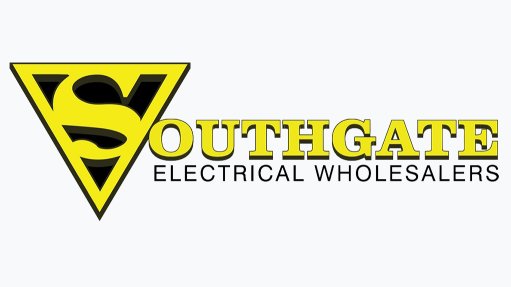Industry must adapt to new vehicle transition
A significant growth opportunity for the local automotive component manufacturing sector lies in how successfully South Africa positions itself in the newenergy vehicle (NEV) assembly space for battery electric vehicles and hydrogen-based fuel cell electric vehicles.
This is vital, given how key export markets, such as the European Union, are forcing the adoption of these technologies, states industry body the National Association of Automotive Component and Allied Manufacturers (NAACAM) executive director Renai Moothilal.
“With a conducive policy environment, opportunities exist for new areas of local production. Key high-value technologies with the potential for localisation in South Africa include electric motors and transmissions; power electronic assemblies and housings; high-voltage electric harnesses and charge ports; and elements of battery pack manuacturing,” he explains.
Moothilal also stresses that locally-based companies are exporting components to global electric-vehicle platforms.
Further, a large portion of NEVs is manufactured with components that are equally compatible with internal combustion engine (ICE) production.
Moothilal adds that the structure of the South African supplier base means that there is “an abundance of global companies” with South African subsidiaries that can manufacture NEV components.
“To onshore these capabilities, there needs to be long-term local demand for these components. There also needs to be a conducive investment and incentive ecosystem to support the moves component manufacturers will make in terms of skills and technology adoption.”
He points out that a potential negative outcome for the local components sector – as government looks to finalise its policy processes to support NEV manufacturing – would be to make it more viable to import key components for local NEV assemblies.
He also highlights concerns about localisation rates, with localisation in the first quarter of this year being the lowest it has been in several years, at 36%.
“Policy makers should also consider how to use this interim period to soak up as much ICE-related production in the short term, as there are still markets in the foreseeable future that have a preference for ICE and its varying levels of hybrid production.”
Supplier Development
NAACAM is facilitating the Automotive Supply Chain Competitiveness Initiative, which aims to improve the level of competitiveness of the component supply base and understand cross-cutting barriers to localisation.
In the past year, a new initiative to embed Industry 4.0 production methodologies has also been rolled out by NAACAM at several South African-owned suppliers, with early indications that project interventions are yielding significant cost-savings for beneficiaries and returns on investment greater than 100%, adds Moothilal.
Industry stakeholders are also undertaking a study to understand the future technology requirements of the sector.
“These requirements include new technologies, components, raw materials and production processes, which will be required across different types of NEVs. Phase 2 of the study will involve supporting domestic companies to make the pivot to these new requirements, likely through the acquisition of global technology,” he explains.
NAACAM has also signed an agreement with World Bank division the International Finance Corporation to develop a localisation opportunities matchmaking platform.
The project was launched with the signing of a funding agreement in the second quarter of the year, with system scoping under way and system development to start in the fourth quarter.
Further initiatives include the High Gear initiative and Yakh’iFuture platform.
High Gear is a skills ecosystem development programme between the Department of Higher Education and Training, the International Youth Foundation and NAACAM, while Yakh’iFuture is an interactive, online career-experience platform designed to help technical and vocational education and training students and graduates.
Article Enquiry
Email Article
Save Article
Feedback
To advertise email advertising@creamermedia.co.za or click here
Announcements
What's On
Subscribe to improve your user experience...
Option 1 (equivalent of R125 a month):
Receive a weekly copy of Creamer Media's Engineering News & Mining Weekly magazine
(print copy for those in South Africa and e-magazine for those outside of South Africa)
Receive daily email newsletters
Access to full search results
Access archive of magazine back copies
Access to Projects in Progress
Access to ONE Research Report of your choice in PDF format
Option 2 (equivalent of R375 a month):
All benefits from Option 1
PLUS
Access to Creamer Media's Research Channel Africa for ALL Research Reports, in PDF format, on various industrial and mining sectors
including Electricity; Water; Energy Transition; Hydrogen; Roads, Rail and Ports; Coal; Gold; Platinum; Battery Metals; etc.
Already a subscriber?
Forgotten your password?
Receive weekly copy of Creamer Media's Engineering News & Mining Weekly magazine (print copy for those in South Africa and e-magazine for those outside of South Africa)
➕
Recieve daily email newsletters
➕
Access to full search results
➕
Access archive of magazine back copies
➕
Access to Projects in Progress
➕
Access to ONE Research Report of your choice in PDF format
RESEARCH CHANNEL AFRICA
R4500 (equivalent of R375 a month)
SUBSCRIBEAll benefits from Option 1
➕
Access to Creamer Media's Research Channel Africa for ALL Research Reports on various industrial and mining sectors, in PDF format, including on:
Electricity
➕
Water
➕
Energy Transition
➕
Hydrogen
➕
Roads, Rail and Ports
➕
Coal
➕
Gold
➕
Platinum
➕
Battery Metals
➕
etc.
Receive all benefits from Option 1 or Option 2 delivered to numerous people at your company
➕
Multiple User names and Passwords for simultaneous log-ins
➕
Intranet integration access to all in your organisation














